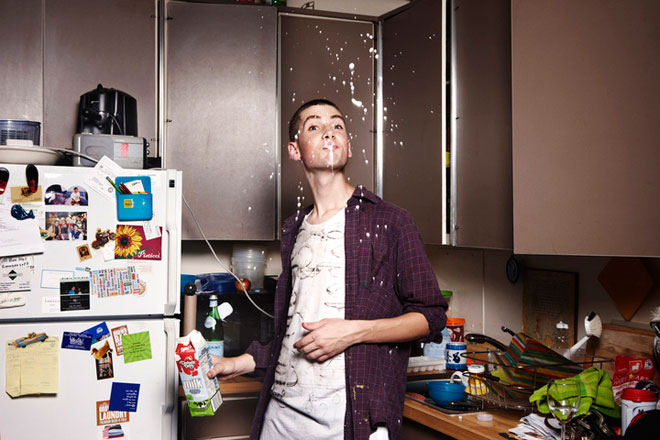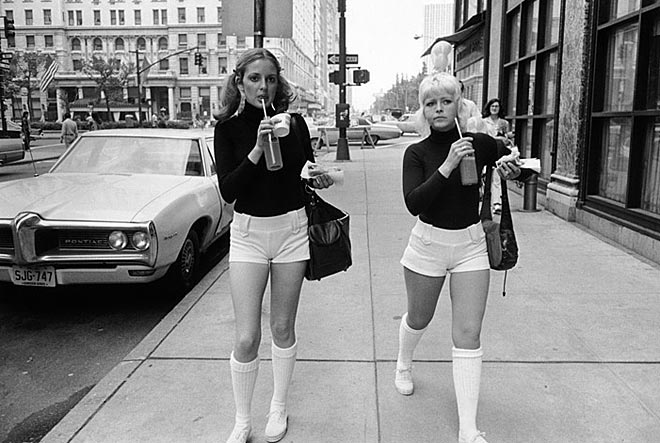photogs
A Study in the Process of Individuation, Part I: The Archetypes and the Collective Unconscious

{ Guido Castagnoli }
The Quantum Mind and the Meaning of Life

Psychology research shows most people wrongly assume their thoughts can become reality — even people who say they don’t believe in telekinesis or ESP. “If you think about something and then it happens, you feel a little bit responsible for it,” Hutson said. It’s an irrational feeling. Why do we feel it?
“It’s a byproduct of how we understand causality,” he said. “If there are two events, A and B, if A happens before B, if there are no other obvious causes of B, and if A and B are conceptually related, then we assume A caused B.”
The faulty logic gets reinforced every time you think a positive thought, such as visualizing a successful basketball free throw, and then the thought boosts your confidence, which affects your behavior, and — voila! — the ball swooshes through the net. (…)
Few Americans openly practice voodoo — e.g., inserting pins into figurines of their enemies in order to inflict bad luck or pain — but studies show we’re all secret practitioners. “When you do some symbolic action or perform some symbolic ritual, you tend to think it will bring about what it symbolizes,” Hutson said.
In a recent experiment, psychologists monitored people’s perspiration levels as they cut up a photograph of a cherished childhood possession. Unsurprisingly, destroying a representation of their childhood made the participants sweat.
photo { Danielle Levitt }
Double oral is gay

Homophobia is more pronounced in individuals with an unacknowledged attraction to the same sex and who grew up with authoritarian parents who forbade such desires, a series of psychology studies demonstrates. The research is the first to document the role that both parenting and sexual orientation play in the formation of intense and visceral fear of homosexuals. (…)
“In many cases these are people who are at war with themselves and they are turning this internal conflict outward,” adds co-author Richard Ryan, professor of psychology at the University of Rochester who helped direct the research.
photo { Jessica Eaton }
Wave that flag, pop the bag, skin the goat, learn to cope

A few blocks later, Zupan wants to demonstrate what he calls “shy distance”: how close you get to an approaching person with whom you are bound to collide before one of you shifts to the side. The process is sometimes anticipated with a kind of foreplay, what Nicholson Baker in The Mezzanine described as “the mutual bobbings you exchange with an oncoming pedestrian, as both of you lurch to indicate whether you are going to pass to the right or to the left.” Scanning the sidewalks, Zupan announces, “I’m going to find someone who’s not looking at their phone. I usually try to find someone smaller than me.” He finds his mark: an ordinary commuter in Dockers and oxford shift, striding purposefully. Zupan puts his head down, and gets to within a few feet before the man breaks right, shooting back an irritated glare. (As Zupan wrote in Urban Space, “Pedestrians have been found to take evasive action anywhere from 2 to 17 ft ahead of a stationary or moving obstacle.”)
What might be for some the unchoreographed whir of the city is for Zupan a set of discrete patterns; if a pattern can’t be observed, it probably just means you haven’t looked long enough. Block by block, they emerge: The way people drift toward the shady side of the street on hot days; the way women (in particular) avoid subway grating on the sidewalk; the way walking speeds are slower at midday than before or after work; the way people don’t like to maintain the same walking speed as a stranger next to them. (…)
When do people choose to take the escalator versus the stairs? How crowded does the former have to be before the latter is chosen?
photo { Paul McDonough, NY City, 1973-1978 }
The guarded glance of half solicitude, half curiosity

According to what some call the strong definition of free will, articulated by René Descartes in the 17th century, you are free if, under identical circumstances, you could have acted otherwise. Identical circumstances refer to not only the same external conditions but also the same brain states. (…)
Contrast this strong notion of freedom with a more pragmatic conception called compatibilism, the dominant view in biological, psychological, legal and medical circles. You are free if you can follow your own desires and preferences. A long-term smoker who wants to quit but who lights up again and again is not free. His desire is thwarted by his addiction. Under this definition, few of us are completely free. (…)
Consider an experiment that ends with a 90 percent chance of an electron being here and a 10 percent chance of it being over there. If the experiment were repeated 1,000 times, on about 900 trials, give or take a few, the electron would be here; otherwise, it would be over there. Yet this statistical outcome does not ordain where the electron will be on the next trial. Albert Einstein could never reconcile himself to this random aspect of nature. (…)
This experiment was conceived and carried out in the early 1980s by Benjamin Libet, a neuropsychologist at the University of California, San Francisco. (…)
Intuitively, the sequence of events that leads to a voluntary act must be as follows: You decide to raise your hand; your brain communicates that intention to the neurons responsible for planning and executing hand movements; and those neurons relay the appropriate commands to the motor neurons that contract the arm muscles. But Libet was not convinced. Wasn’t it more likely that the mind and the brain acted simultaneously or even that the brain acted before the mind did?
Libet set out to determine the timing of a mental event, a person’s deliberate decision, and to compare that with the timing of a physical event, the onset of the readiness potential after that decision. (…)
The results told an unambiguous story, which was bolstered by later experiments. The beginning of the readiness potential precedes the conscious decision to move by at least half a second and often by much longer. The brain acts before the mind decides! This discovery was a complete reversal of the deeply held intuition of mental causation.
photo { Tabitha Soren }
Innocence is the child, and forgetfulness, a new beginning, a game, a self-rolling wheel, a first movement, a holy Yea.

I have heard that higher IQ people tend to have less children in modern times than lower IQ people. And if larger family size makes the offspring less capable, than we are pioneering interesting times.
photo { Augustin Rebetez }
All dead names. A dead sea in a dead land, grey and old. Old now.

We show that the number of gods in a universe must equal the Euler characteristics of its underlying manifold. By incorporating the classical cosmological argument for creation, this result builds a bridge between theology and physics and makes theism a testable hypothesis. Theological implications are profound since the theorem gives us new insights in the topological structure of heavens and hells. Recent astronomical observations can not reject theism, but data are slightly in favor of atheism.
{ Daniel Schoch, Gods as Topological Invariants | arXiv | Continue reading }
photo { Adam Bartos }
I got franks and pork and beans, always bust the new routines

There is no shortage of advice on how to recover from a bad break-up: keep busy, don’t contact your ex, go out with friends. (…) But according to a new study, something important is missing from this list. (…)
“It is just something that happens these days.” (…) This statement expresses a sense of common humanity, or recognition that suffering is part of the human experience, which is considered a fundamental part of self-compassion. (…)
“It was all my fault. (…) I know I did it all wrong.” In contrast to the first statement, this one includes a high degree of self-judgment, with no evidence of self-kindness. (…)
Results indicated that participants who were judged to be higher in self-compassion showed less distress at the beginning of the study and at the nine-month mark, while those low in self-compassion showed a greater increase in distress between six and nine months.
photo { Sam Haskins }
A lot of people they be jonesin’ just to hear me rock the mic

This one particular boy’s goal was to be able to press his lips to every square inch of his own body.
photo { Asger Carlsen }
You think you balling because you got a block, he think he balling because he got a block

{ Maddie the Coonhound | Thanks Glenn }
Pleasant to see first thing in the morning

Today’s word: the business term for membership services (gyms, streaming music) being paid for but not used is “breakage.”
photo { Nathaniel Ward }
Trash past death

Several studies suggest that memories can be pharmaceutically dampened. For example, researchers recently showed that a drug called ZIP causes cocaine-addicted rats to forget the locations where they had regularly been receiving cocaine. Other drugs, already tested in humans, may ease the emotional pain associated with memories of traumatic events.
Many are alarmed by the prospect of pharmaceutical memory manipulation. In this brief comment, I argue that these fears are overblown. Thoughtful regulation may someday be appropriate, but excessive hand-wringing now over the ethics of tampering with memory could stall research into promising methods of preventing and treating post-traumatic stress.
photo { Nigel Shafran, Moonflower, 1990 }
‘Be so good they can’t ignore you.’ –Steve Martin

Defamiliarization or ostranenie is the artistic technique of forcing the audience to see common things in an unfamiliar or strange way, in order to enhance perception of the familiar.
photo { Philip-Lorca diCorcia }










